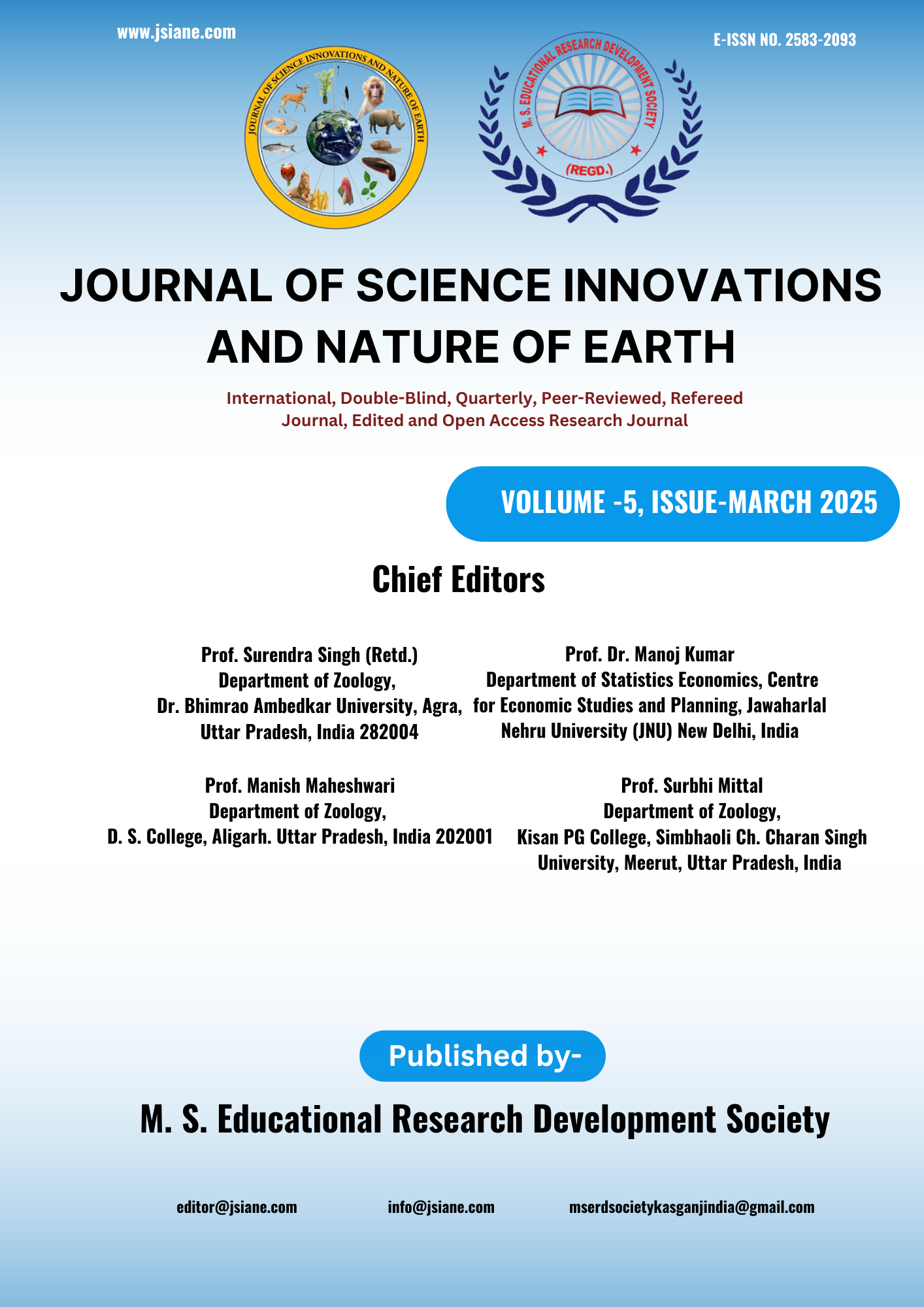Estimation of Lipid Peroxidation of Spinach Leaf Extract's after Radiation Exposure to Mice Brain
DOI:
https://doi.org/10.59436/jsiane.301.2583-2093Abstract
This study seeks to investigate the radioprotective efficacy of spinach in mitigating oxidative stress induced by radiation, given its leaves' richness in antioxidants, including proteins, vitamins, ascorbic acid, p-coumaric acid, and carotenoids (lutein, beta-carotene, and zeaxanthin). Healthy male 6-week-old Swiss albino mice were chosen from an inbred colony and kept on regular mouse food and water without restriction. Four groups of mice were used for the tests. There was no treatment given to Group 1 (normal). Group II (drug treated) received a daily oral supplement of spinach extract dissolved in double-distilled water at a level of 1100 mg/kg.b.wt./day for 15 days in a row. For 15 days in a row after being exposed, Group III (experimental) also received oral spinach extract at a rate of 1100 mg/kg.b.wt/day. Supplementing with spinach before irradiation lowers the LPO values, which were significantly elevated by radiation at all examined intervals. Day 30° saw the experimental group's LPO values return to normal, while the control group's LPO values were remained increased by about 12%. It is possible that spinach leaf extract lowers LPO values by squelching free radicals because the amounts of LPO products in the brains of mice given SE supplements activate antioxidant enzymes in the brain. The present study's protective effect of SE on the brain's LPO value suggests that spinach may have some radioprotective properties if consumed regularly. This could be because of the antioxidants' synergistic effects.
References
Bhattacharya S.K., Satyam K. and Ghosal S. (1996) Antioxidant activity of glycowithanolides from Withania somnifera. Ind. J. Expl. Biol. 35, 236-239.
Bickford P.C., Gould T.L., Briederick Chandma L.K., Pollock A., Young D., Shukitt-Hale B. and Joseph J. (2000): Antioxidant-rich diets improve cerebellar physiology and motor learning in aged rats. Brain Res. 866(1-2), 211-217.
Burton G.W. and Ingold K.U. (1984): ẞ -carotene: An unusual type of lipid antioxidant. Science. 224, 569-573.
Chandha S.L. (1997): Natural source of antioxidant and their adequacy in diet to prevent atherosclerosis. Mediquext. 14(3), 337-351.
Foote C.F., Chang Y.C. and Denny R.W. (1970): Chemistry of singlet oxygen. Carotenoid quenching parallels biological protection, J. Am. Chem. Soc. 92, 5216-5219.
Gerster H. (1993): Anticarcinogenic effect of common carotenoids. Int. J. Vit. Nutr. Res. 63, 93-121.
Gopalan C., Balasubramanian S.C. and Arykroyed W. R. (1966): The nutritive value of Indian foods and the planning of satisfactory diets. Health Bulletin No. 23, ICMR Series No. 42, 258,
Guil J.L., Rodriguez-Garcia I. and Torija E. (1997): Nutritional and toxic factors in selected wild edible plants. Plant Foods Hum, Nutr. 51(2), 99-107.
Halliwell B. and Gutteridge J.M.C. (1989): Free Radicals in Biology and Medicine. 2nd ed. Oxford, UK: Clarendon Press.
Jospeh J.A., Shukitt-Hale B., Denisova N.A., Bielenski D., Martin A., Ewen J.J., Bickford P.C. (1999): Reversals of age-related decline in neuronal signal transduction, cognitive and deficits with blue berry, spinach or straw berry dietary supplementation. J. Neuroscience. 19(18), 8114-8121.
Kale R.K., Sitaswad S.L. (1990): Radiation induced Lipid peroxidation in liposomes. Radiat. Phys. Chem, 36, 361-364.
Krinsky N.L. (1989): Antioxidant function of carotenoids. Free Rad. Biol. Med. 7,617-635.
Leyko W. and Bartosz G. (1986): Membrane effect of ionizing radiation and hyperthermia. Int. J. Radiat Bio. 49, 743-770.
Okhawa H., Ohishi N. and Yagi K. (1979): Assay for lipid peroxides in animal tissue by thiobarbituric acid reaction. Anal. Biochem. 95, 351-358.
Petkau A. and Chelack W.S. (1976): Radioprotective effect of superoxide dismutase on model phospholipid membranes. Biochem. Biophys. Acta. 443, 445.
Peto R., Doll R., Buckley J.D. and Sporn M. B. (1981): Can dietary ẞ-carotene materially reduce human cancer rates. Nature. 290, 201-208.
Raleigh J.A. (1989): Radioprotection of membranes. Pharmacology and Therapeutics. 39, 109-113.
Sies H. (1986): Biochemistry of oxidative stress. An New Chem Int. Ed Engl. 25, 1058- 1071.
Van het Hof K.H., Tijburg L.B., Pietrzik K. and Weststrate J.A. (2000): Influence of feeding different vegetables on plasma levels of carotenoids, folate and vitamin C. Effect of disruption of the vegetable matrix. Br. J. Nutr. 82(3), 203-212.
Yen Grow-Chin She., Chig W. and Pin-Der, D. (1996): Extraction and identification of components from the level of Mulbery. J. Agri. Food Chem. 44, 1687-1690.
Downloads
Published
Issue
Section
License
Copyright (c) 2025 Maharaj Singh Educational Research Development Society

This work is licensed under a Creative Commons Attribution-NonCommercial 4.0 International License.










